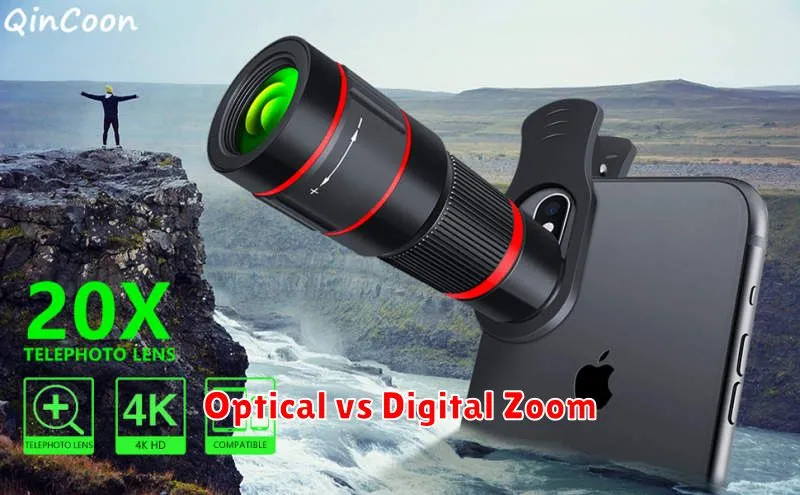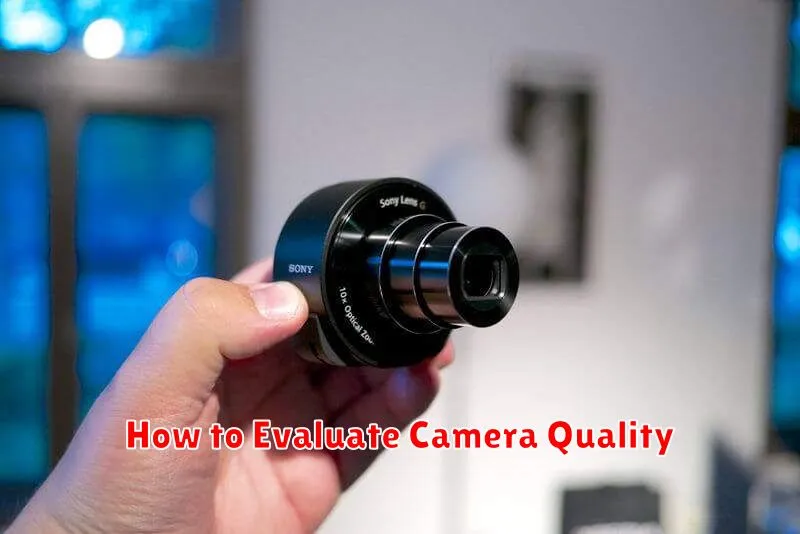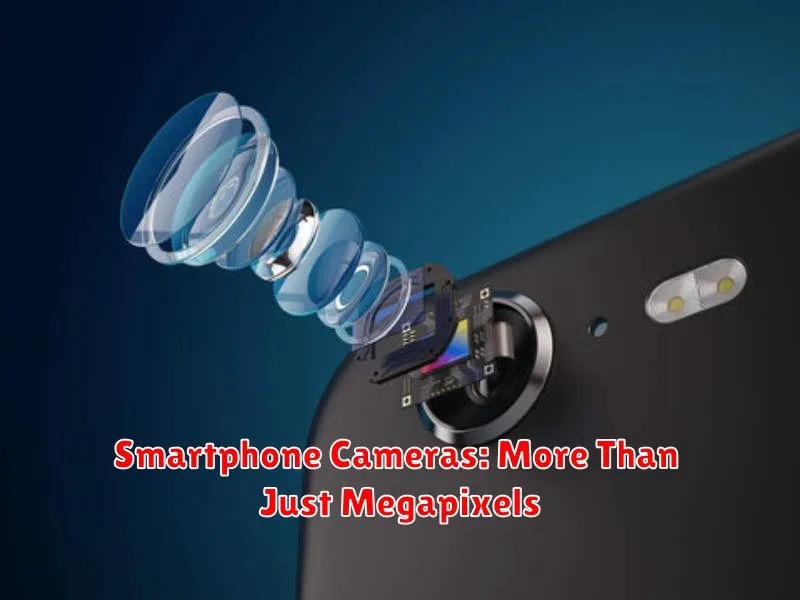In today’s digital age, smartphone cameras have become ubiquitous, transforming how we capture and share our world. Many consumers focus solely on megapixels when considering a new phone, believing a higher number automatically equates to superior image quality. However, the truth is far more nuanced. Smartphone camera technology encompasses much more than just megapixel count, with factors like sensor size, aperture, image processing, and lens quality playing crucial roles in producing stunning photographs and videos. This article delves beyond the megapixel myth, exploring the key elements that contribute to a truly exceptional smartphone camera experience.
Beyond simply capturing memories, smartphone cameras have evolved into powerful creative tools, empowering users to experiment with various photography styles and techniques. From capturing breathtaking landscapes to recording cinematic videos, the potential of modern smartphone cameras is vast. This exploration will uncover the underlying technologies that drive this photographic prowess, examining how features like optical image stabilization, autofocus systems, and artificial intelligence algorithms enhance the capabilities of smartphone cameras far beyond the limitations of mere megapixel numbers. Understanding these crucial aspects allows for informed decisions when choosing a smartphone, ensuring a device that meets your specific photographic needs and aspirations.
Understanding Camera Specs
While megapixels are often the first thing people look at, understanding other camera specifications is crucial for evaluating smartphone camera quality. Sensor size, aperture, and focal length all play significant roles in image quality.
A larger sensor generally captures more light, resulting in better low-light performance and dynamic range. Aperture, represented by an f-number (e.g., f/1.8), indicates how much light the lens lets in. A lower f-number means a wider aperture and more light intake. Focal length affects the field of view; a shorter focal length provides a wider view, while a longer focal length offers a narrower, zoomed-in perspective.
Other important specs include optical image stabilization (OIS), which reduces blur from shaky hands, and autofocus systems, which impact focusing speed and accuracy. Considering these specifications alongside megapixel count will help you choose a smartphone camera that best suits your needs.
The Role of Megapixels
Megapixels, often abbreviated as “MP,” represent the resolution of a camera’s sensor. A higher megapixel count means more pixels are capturing the image, theoretically resulting in more detail. While megapixels contribute to image quality, they are not the sole determining factor.
A high megapixel count allows for larger prints without noticeable pixelation. It also offers more flexibility for cropping images without significant quality loss. However, other factors like sensor size, lens quality, and image processing play equally crucial roles in overall image quality. A camera with fewer megapixels but a larger sensor and superior lens can often produce better images than a camera with a high megapixel count but inferior components.
Aperture and Low Light Performance
Aperture plays a crucial role in a smartphone camera’s ability to perform well in low-light conditions. It refers to the size of the opening in the lens that allows light to reach the sensor. A wider aperture, represented by a smaller f-number (e.g., f/1.7), allows more light to enter, resulting in brighter images and less noise in dimly lit environments.
A wider aperture also impacts depth of field, allowing for that aesthetically pleasing blurred background effect, often referred to as “bokeh”. However, a wider aperture isn’t the only factor determining low-light performance. Sensor size and image processing also contribute significantly.
Optical vs Digital Zoom

Understanding the difference between optical and digital zoom is crucial for taking high-quality photos. Optical zoom uses the camera’s lens to physically magnify the subject, preserving image detail. Think of it like a telescope. Digital zoom, on the other hand, simply enlarges a portion of the image sensor’s data, which reduces image quality and can result in pixelation.
When you use digital zoom, you are essentially cropping the image and then resizing it to fit the original dimensions. This process stretches the existing pixels, resulting in a loss of sharpness and detail. Optical zoom avoids this by using the lens to capture more of the scene from the start.
Image Stabilization Explained
Image stabilization is a crucial feature in smartphone cameras, combating blurry photos and shaky videos caused by hand movements. It allows for sharper images in low-light conditions where slower shutter speeds are necessary.
Several methods achieve this. Optical Image Stabilization (OIS) physically moves the lens or sensor to counteract handshake. Electronic Image Stabilization (EIS) uses software algorithms to analyze movement and adjust the image digitally. Some newer phones combine both methods for even better results.
The effectiveness of image stabilization is measured in stops. Each stop doubles the amount of time the shutter can stay open without blurring. For example, a 2-stop stabilization system lets you use a shutter speed twice as slow as you could without stabilization.
AI and Computational Photography
Artificial intelligence (AI) is transforming smartphone photography. Computational photography leverages AI algorithms to enhance images in ways previously impossible with traditional optics alone. This allows for features like improved low-light performance, enhanced dynamic range, and more realistic bokeh.
AI plays a crucial role in scene recognition, automatically adjusting camera settings to optimize for different subjects and lighting conditions. This allows users to capture professional-looking photos with minimal effort.
Video Capabilities in Smartphones
Beyond still photos, video recording has become a core function of modern smartphones. Resolution capabilities have dramatically increased, with many devices now offering 4K recording and even 8K on select models.
Frame rates also play a crucial role in video quality. Higher frame rates like 60fps or 120fps provide smoother motion, particularly beneficial for action shots. Some smartphones offer advanced features such as slow-motion video capture and time-lapse recording.
Stabilization is another critical aspect. Optical image stabilization (OIS) and electronic image stabilization (EIS) minimize shaky footage, resulting in cleaner, more professional-looking videos.
Wide Angle and Macro Lenses
Beyond the standard lens, many smartphones now incorporate wide-angle and macro lenses, expanding creative possibilities. Wide-angle lenses capture a broader field of view, ideal for landscapes and group photos. They allow you to fit more of the scene into the frame, creating a sense of expansiveness.
Macro lenses, on the other hand, are designed for extreme close-ups. They allow you to capture intricate details of small subjects, like flowers or insects, revealing a world often unseen by the naked eye. The ability to switch between these lens types provides greater flexibility and control over the final image.
Best Camera Phones in 2025
The year 2025 has brought remarkable advancements in smartphone camera technology. Choosing the “best” depends on individual needs, but several models stand out for their exceptional performance.
The ProCam X10 boasts incredible low-light capabilities and impressive zoom range. Its advanced image processing delivers stunning detail and color accuracy.
The OptiZoom Z5 is a top contender for its periscopic zoom lens, pushing the boundaries of mobile photography. Its image stabilization ensures sharp photos, even at high magnification.
Finally, the PixelMaster 7 continues its legacy of outstanding computational photography. Its AI-powered features produce vibrant and detailed images in various shooting conditions.
How to Evaluate Camera Quality

Evaluating camera quality goes beyond simply looking at megapixel counts. Sensor size, aperture, and image processing play crucial roles. A larger sensor generally captures more light, resulting in better low-light performance and dynamic range.
Aperture, represented by an f-number (e.g., f/1.8), dictates how much light enters the lens. A lower f-number signifies a wider aperture, allowing for better low-light shots and depth-of-field control. Consider the lens quality as well. High-quality lenses minimize distortions and aberrations.
Finally, examine the camera’s image processing capabilities. This includes factors like noise reduction, sharpness, and color accuracy. Look at sample photos to assess the overall image quality in various lighting conditions.

